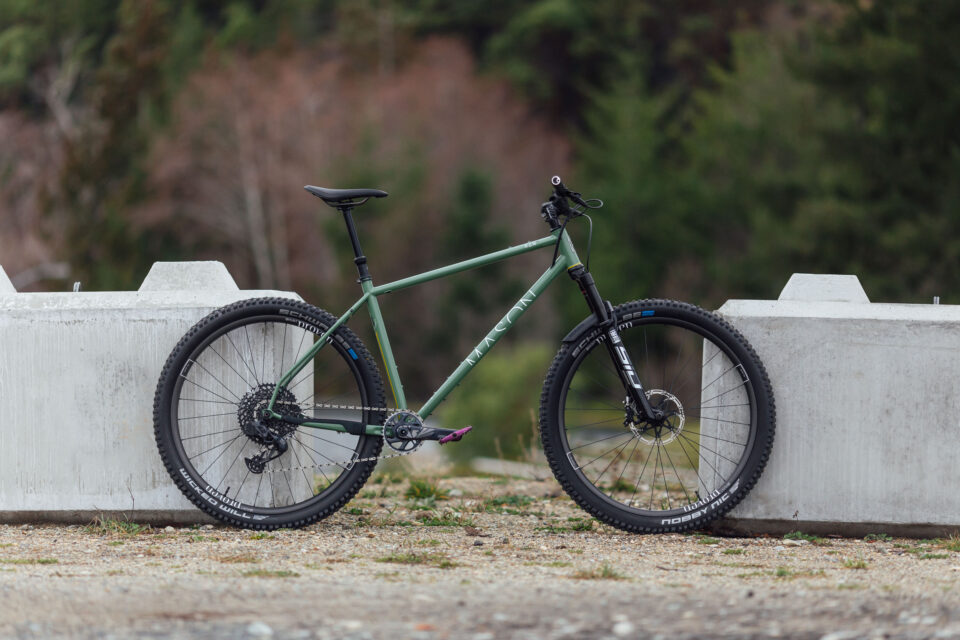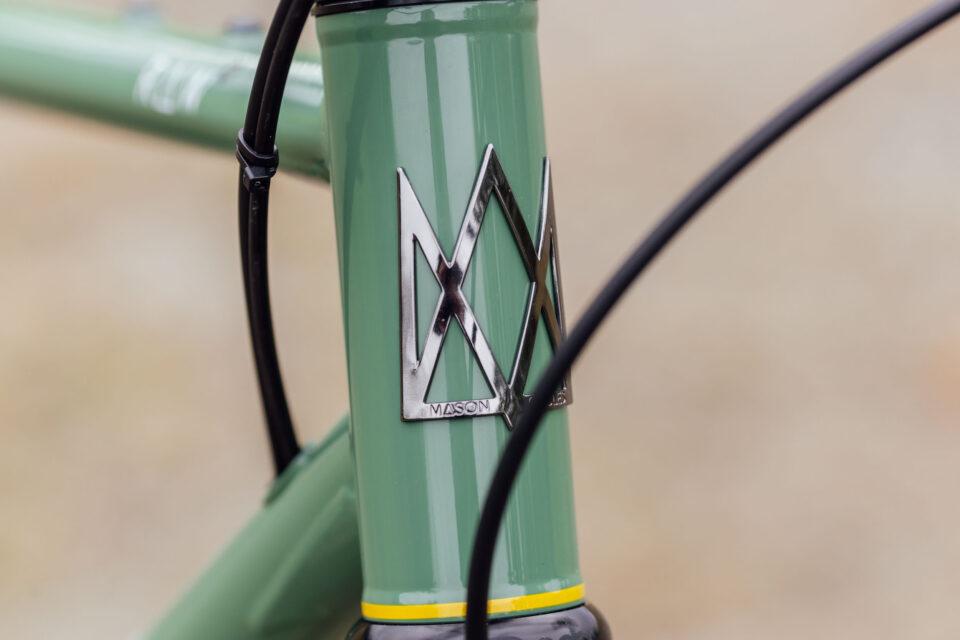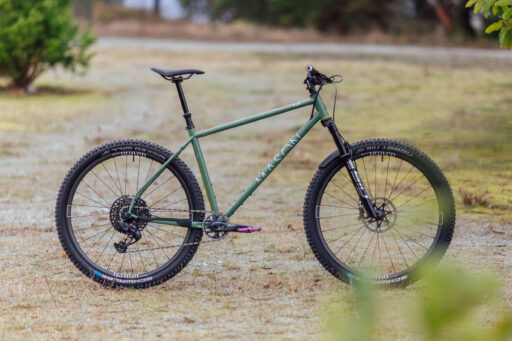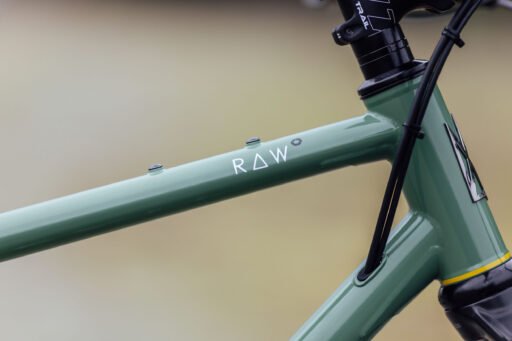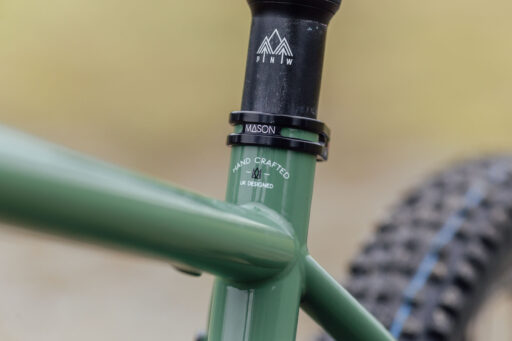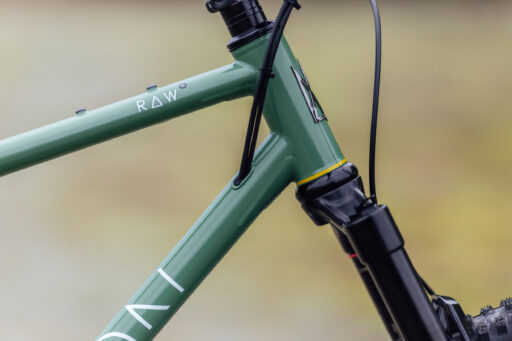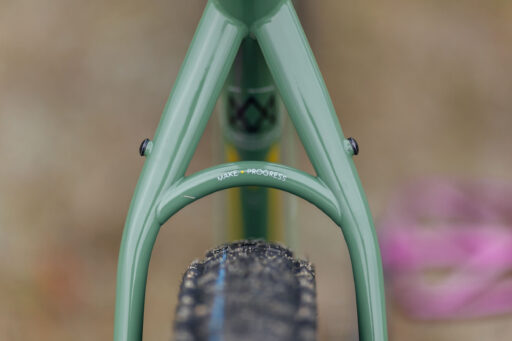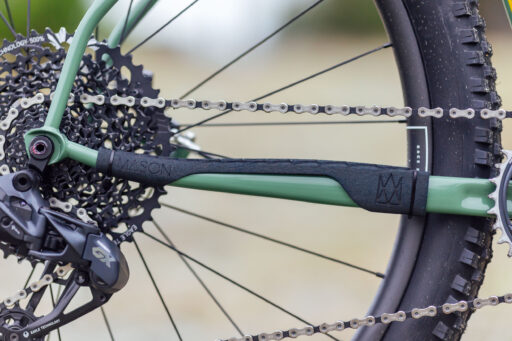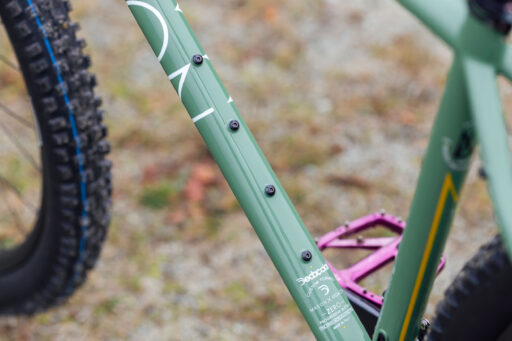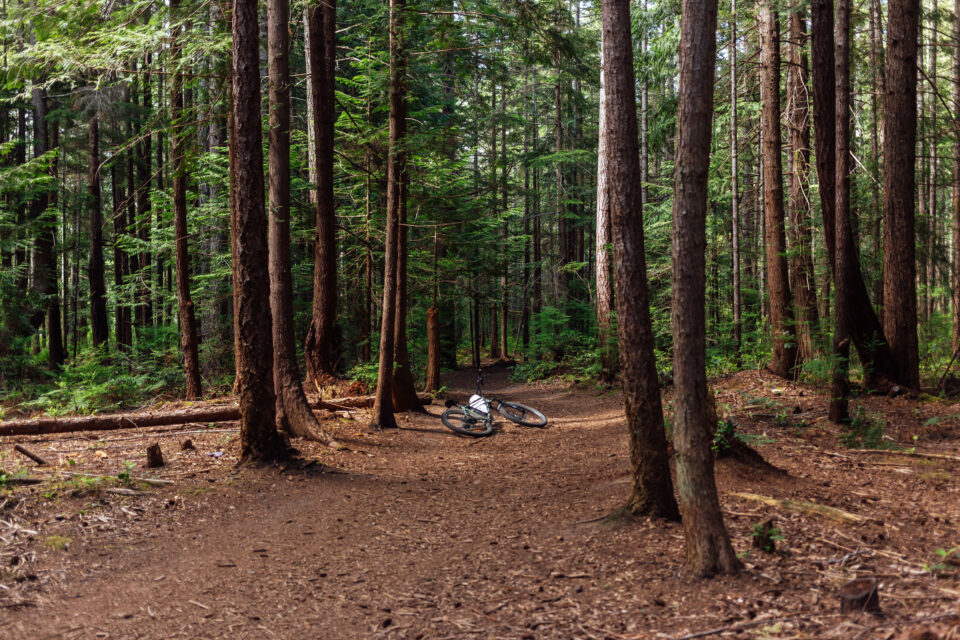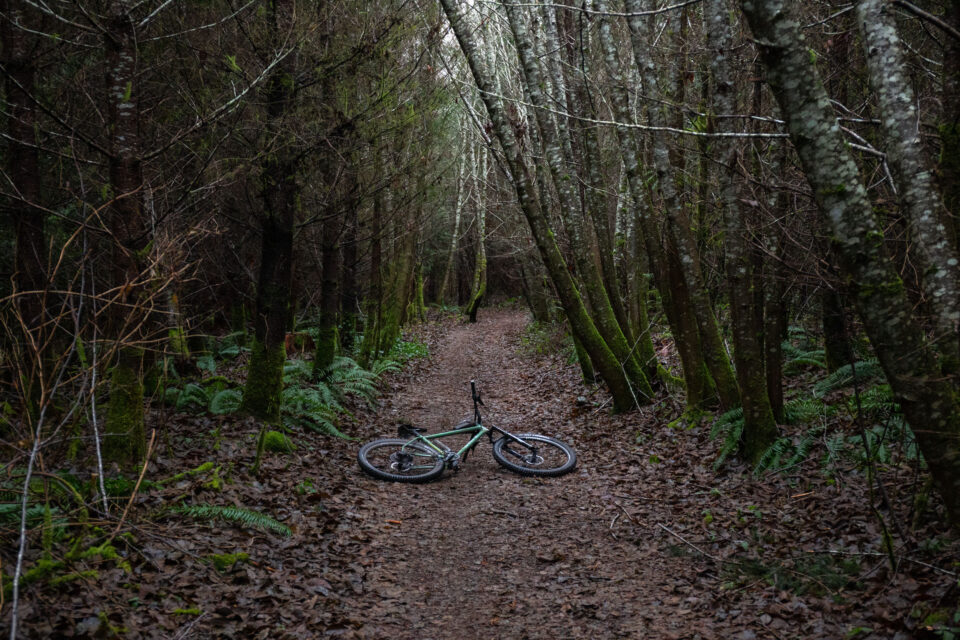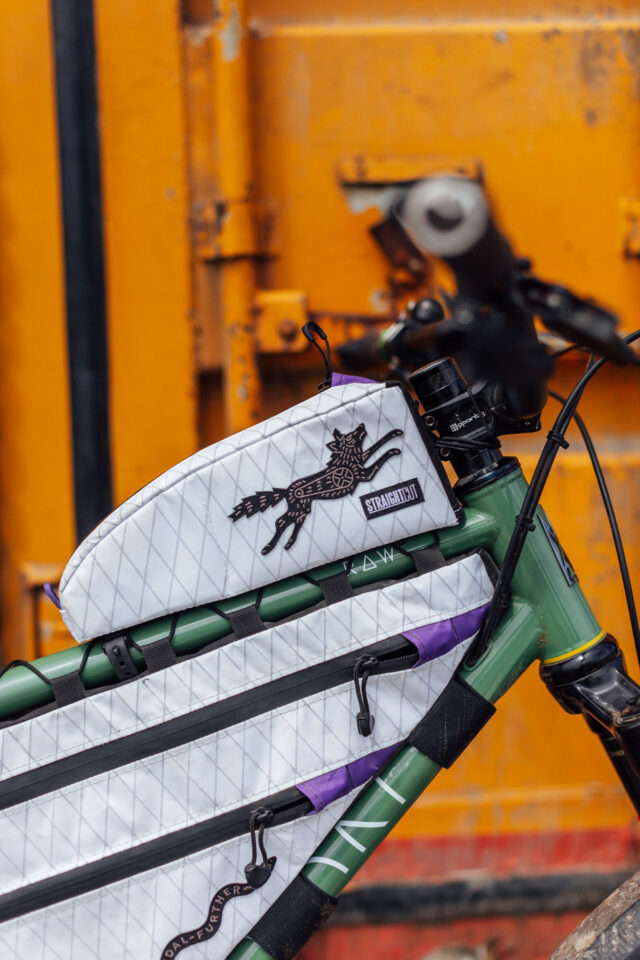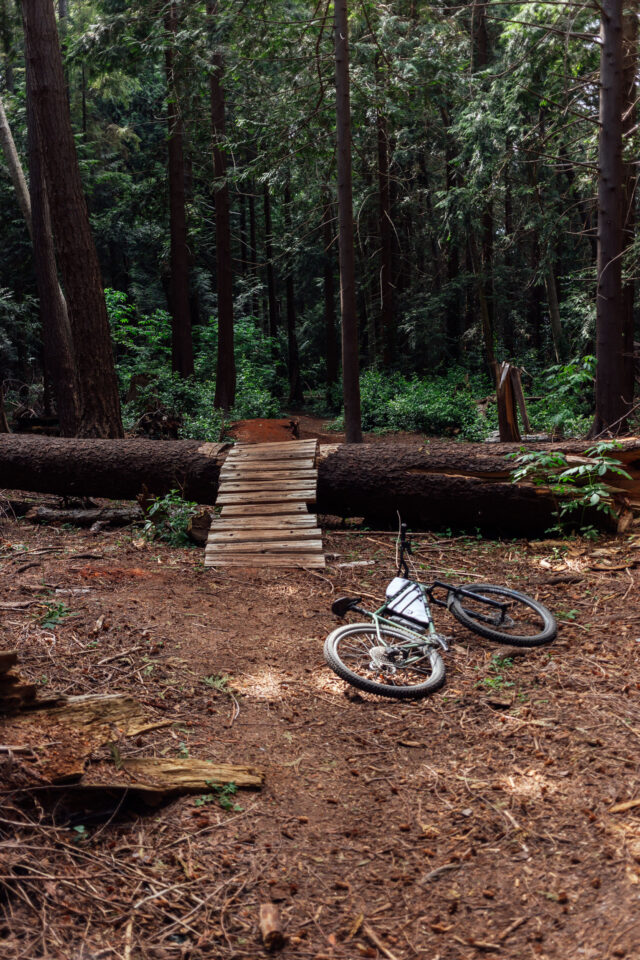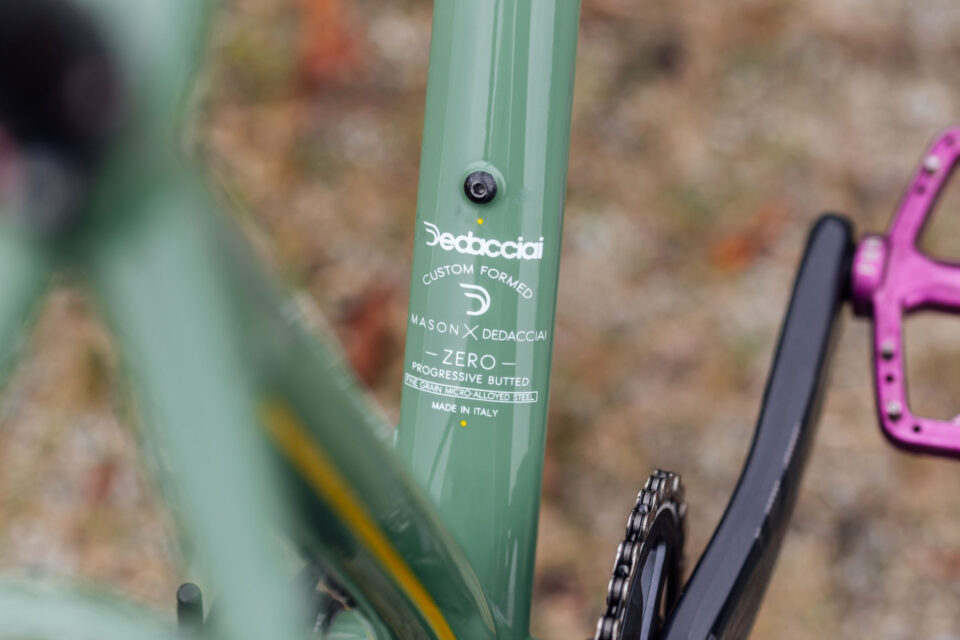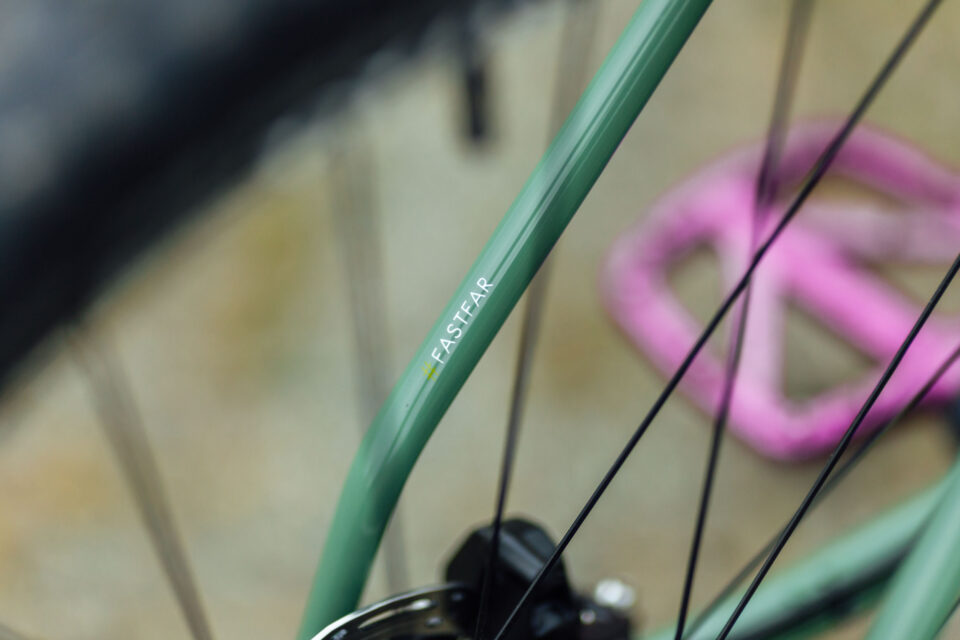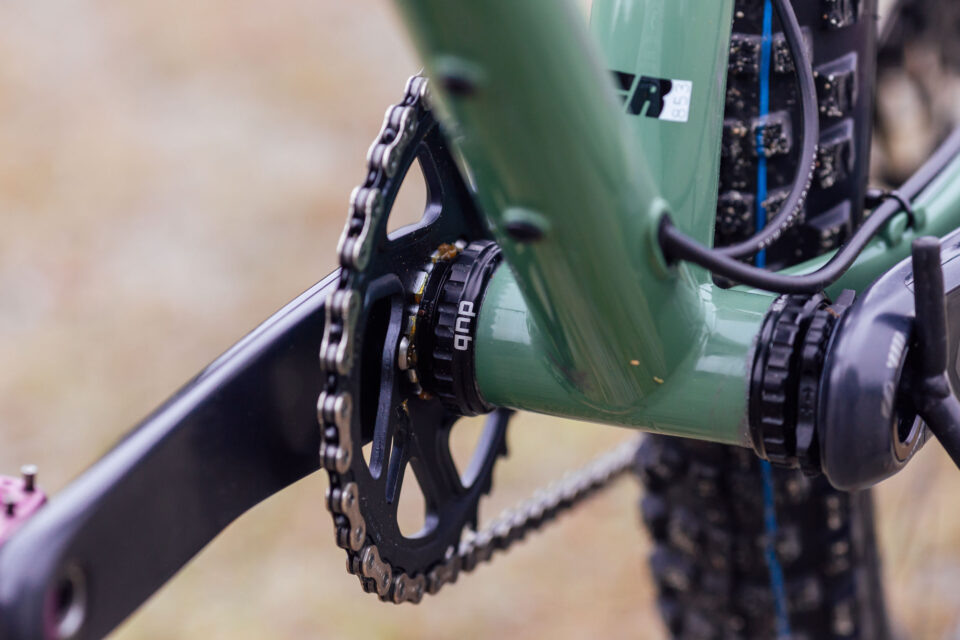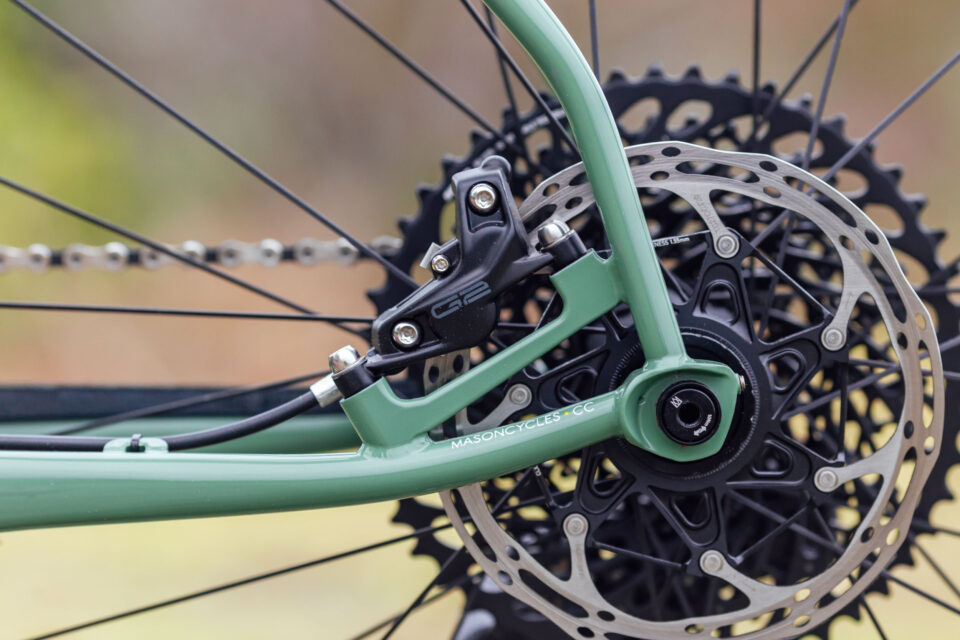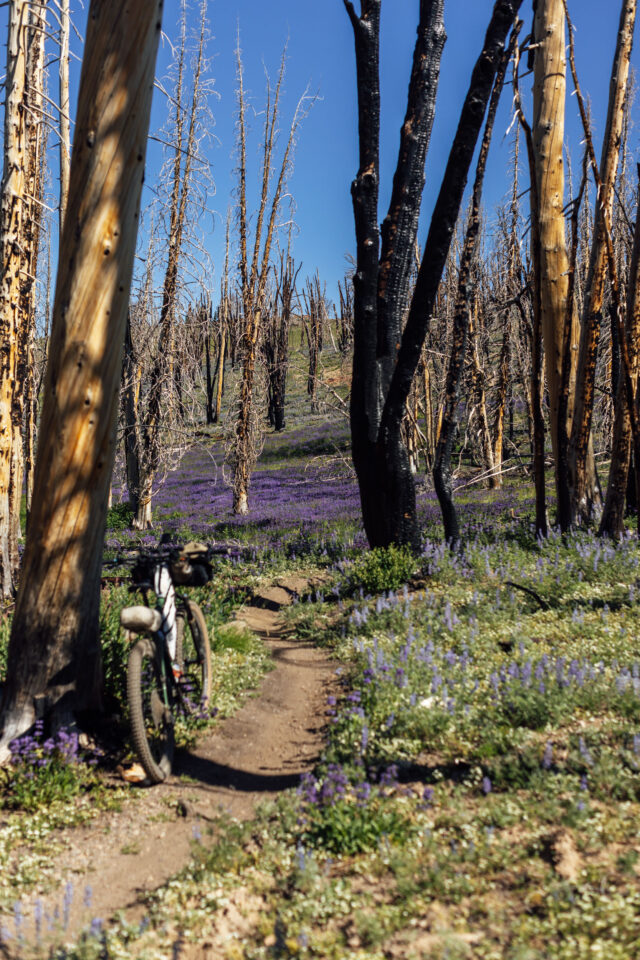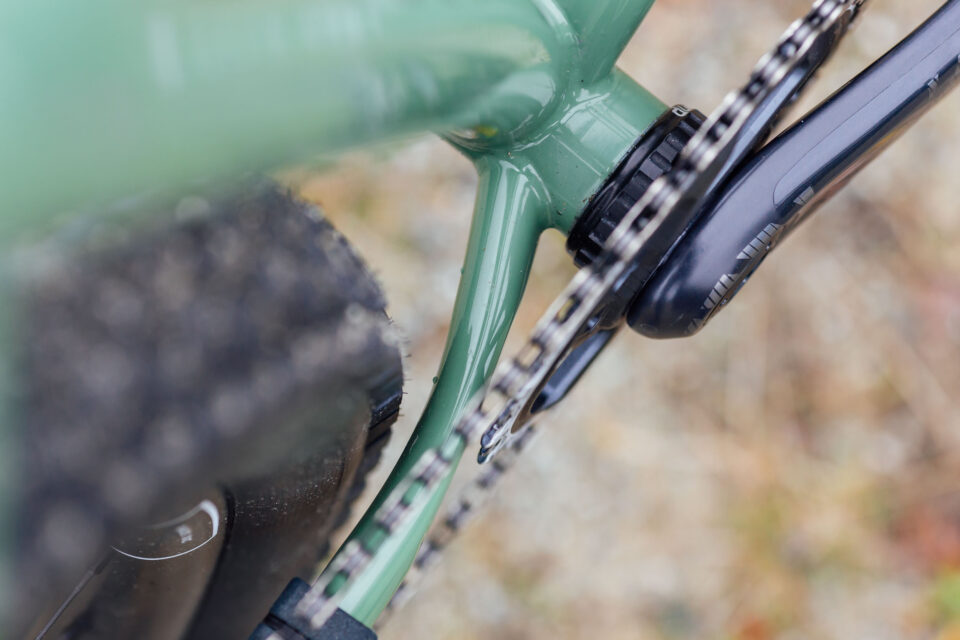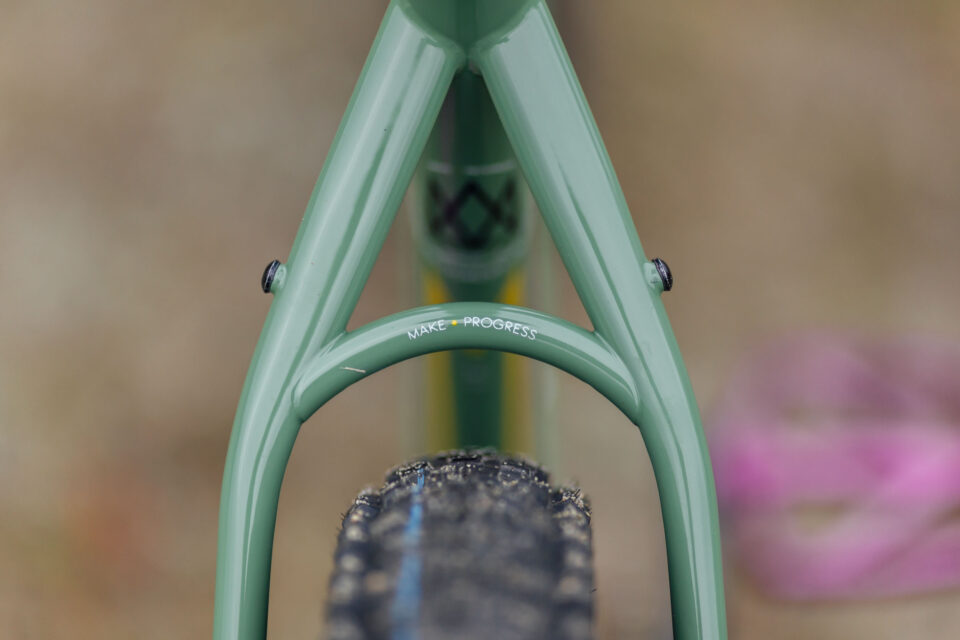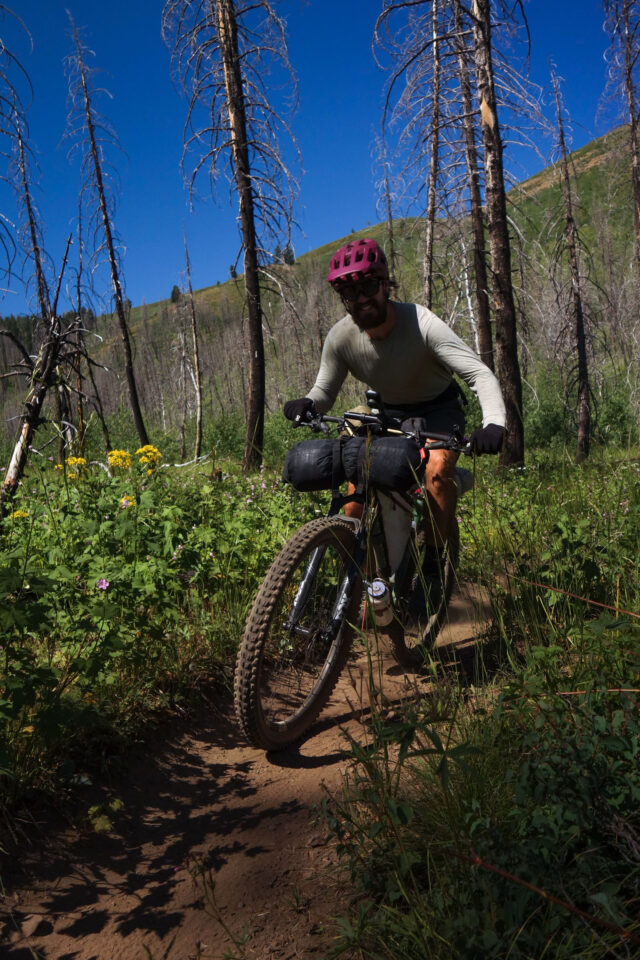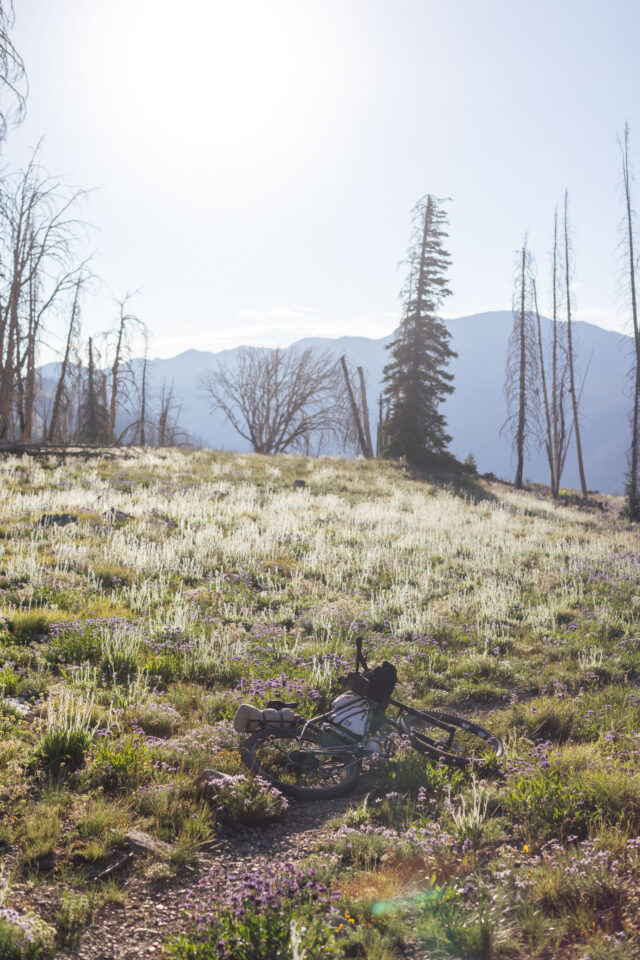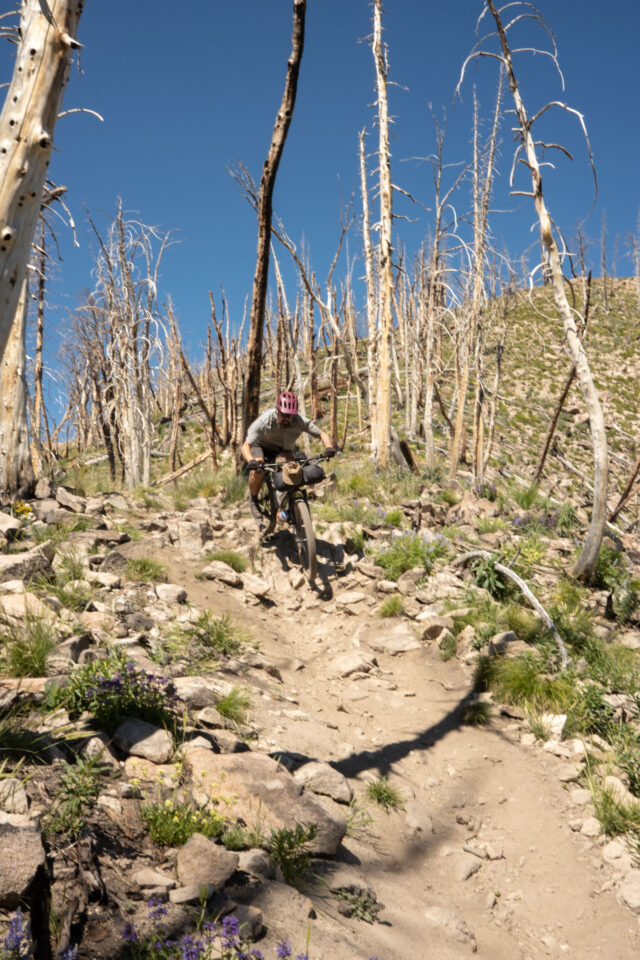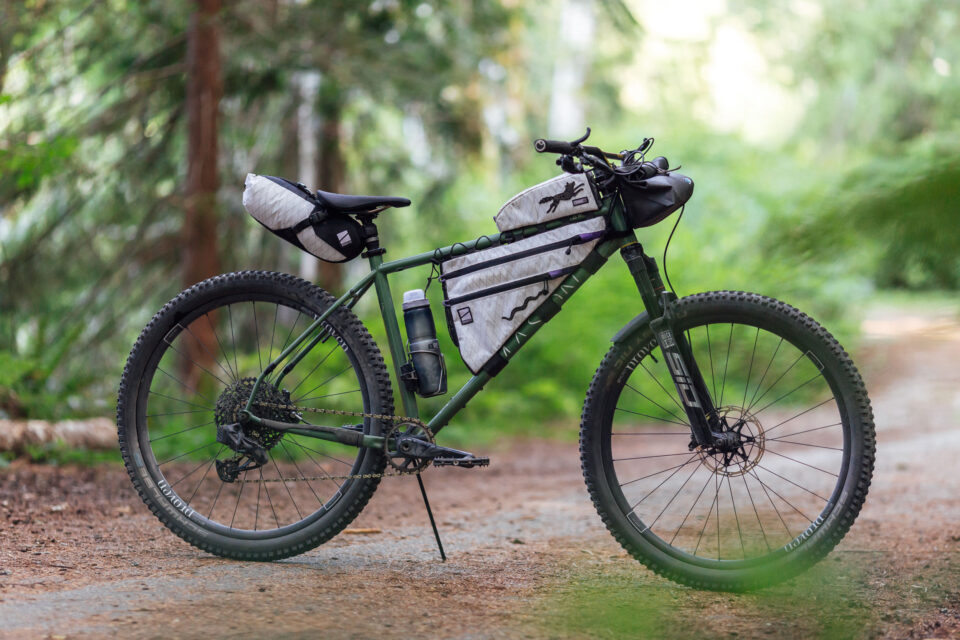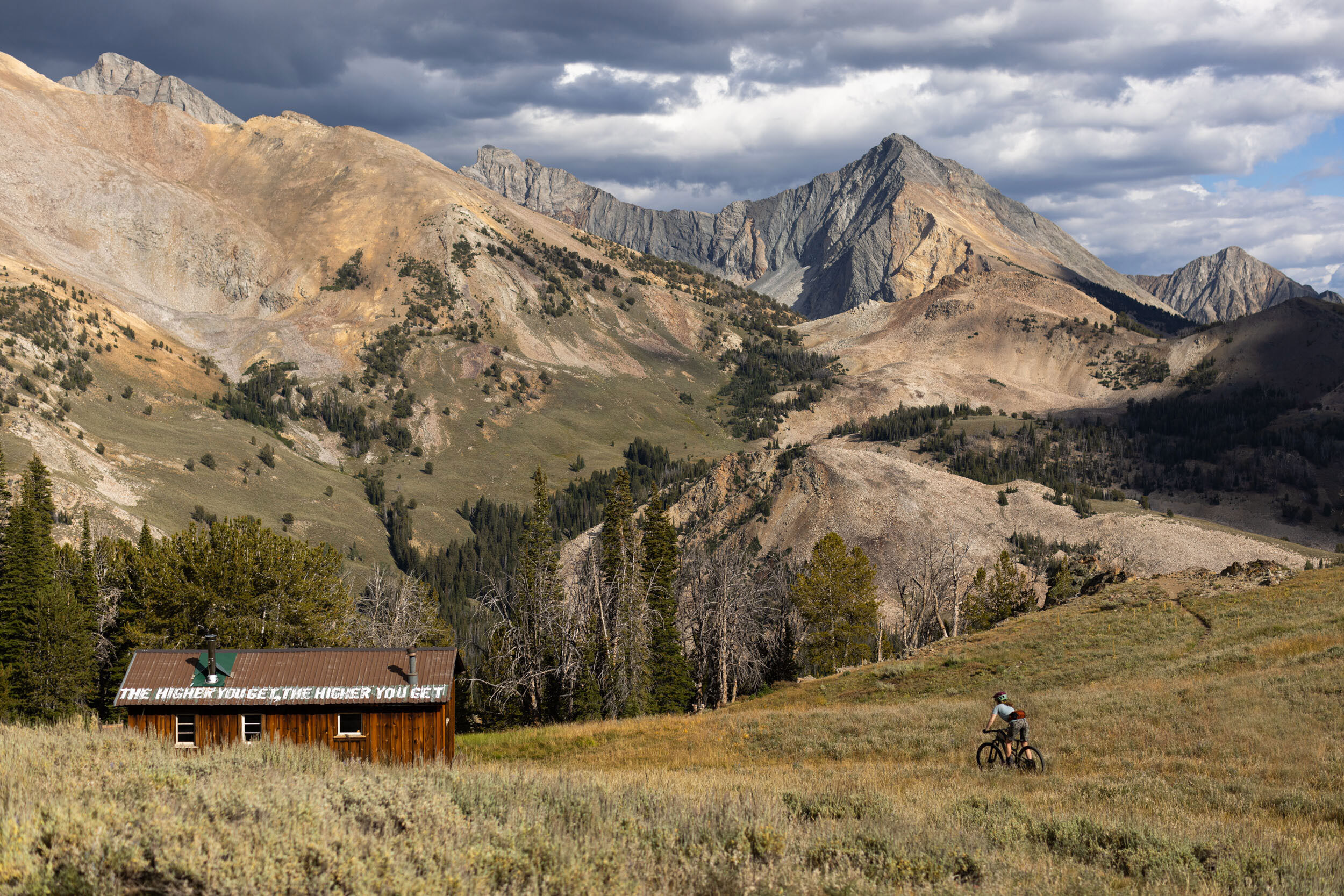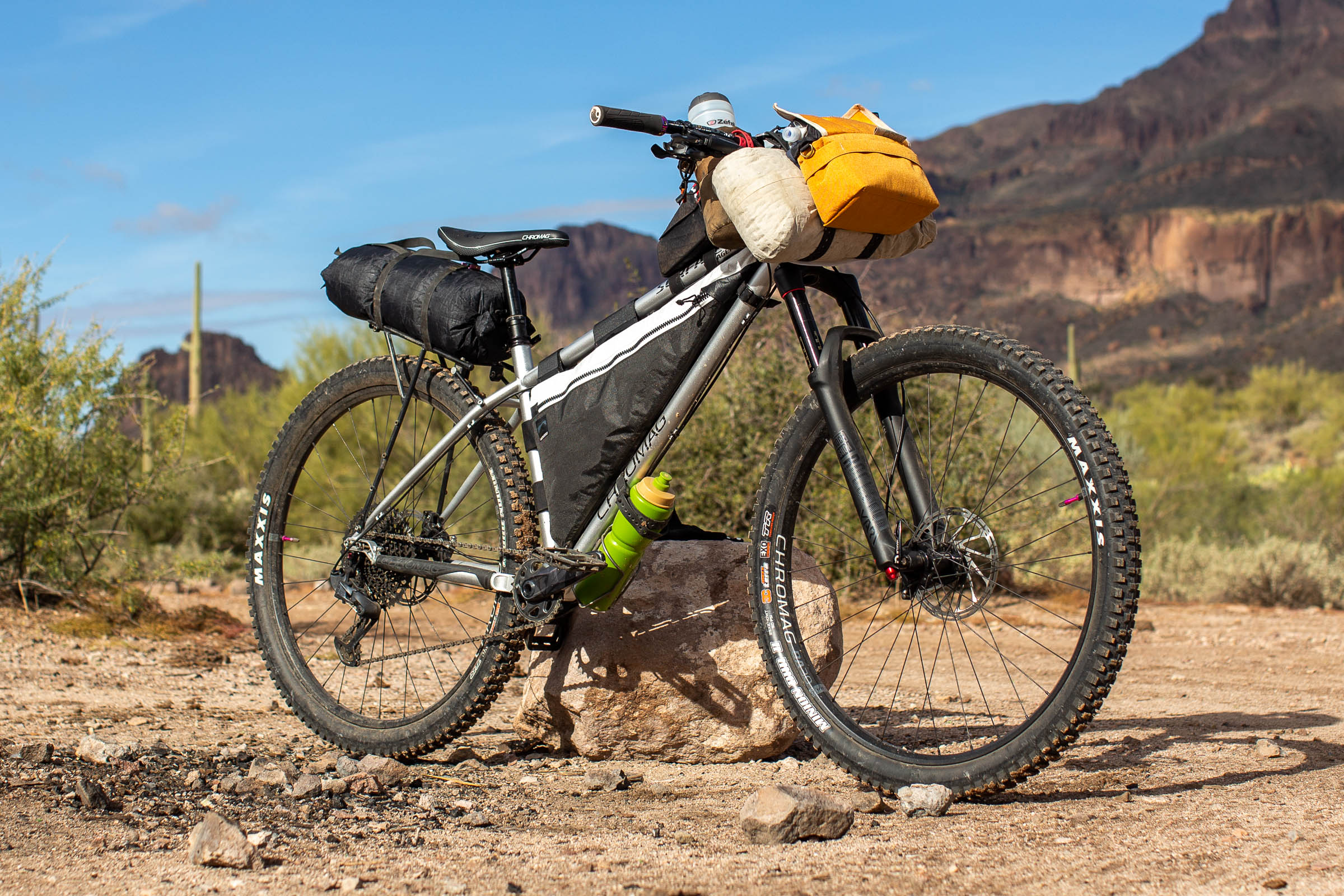Mason RAW Review: High-Caliber Hardtail
Share This
Designed to offer an engaging and spirited ride for folks venturing beyond gravel and onto trails, the UK-made RAW is Mason’s first dedicated flat-bar mountain bike. It has proven its capabilities at events like the Highland Trail and Dales Divide, and we were curious how it would handle multi-day bikepacking trips, trail riding, and everything in between. Find Miles’ long-term review of the Mason RAW after countless unloaded rides around the Pacific Northwest, a route-scouting trip to Idaho’s Sun Valley region, and a handful of close-to-home overnighters here…
A few weeks ago, I was chatting with Logan and he mentioned that he currently has five steel hardtails in his possession and wouldn’t have it any other way. Although this might seem a little overkill for most people, it made me think about this class of mountain bike, how they’ve shaped what we know as bikepacking, and my experience with them over the last 10+ years. My relationship with steel started with the original Moonlit Swamp Surly Krampus, the first production 29+ bike to hit the market, which effectively changed the way people looked at off-road touring. Even though the original Krampus lacked important mounting points such as rack and fork leg mounts, its cross-country-inspired geometry and massive tires made a magical combination for bikepacking.
As my trail-riding confidence grew, I found my way to the Surly Karate Monkey after becoming smitten by Michael Dammer’s custom build and his unique homemade leather frame bag. Although hardtail geometry and specs have shifted since then, I think the Karate Monkey hit a sweet spot for me and still influences my thoughts on what makes a good off-road bicycle. There’s something about the unique feel, smooth ride quality, and classic look of a steel mountain bike that has me thinking about those early days of bouncing down trails on my Krampus and falling in love with bikepacking.
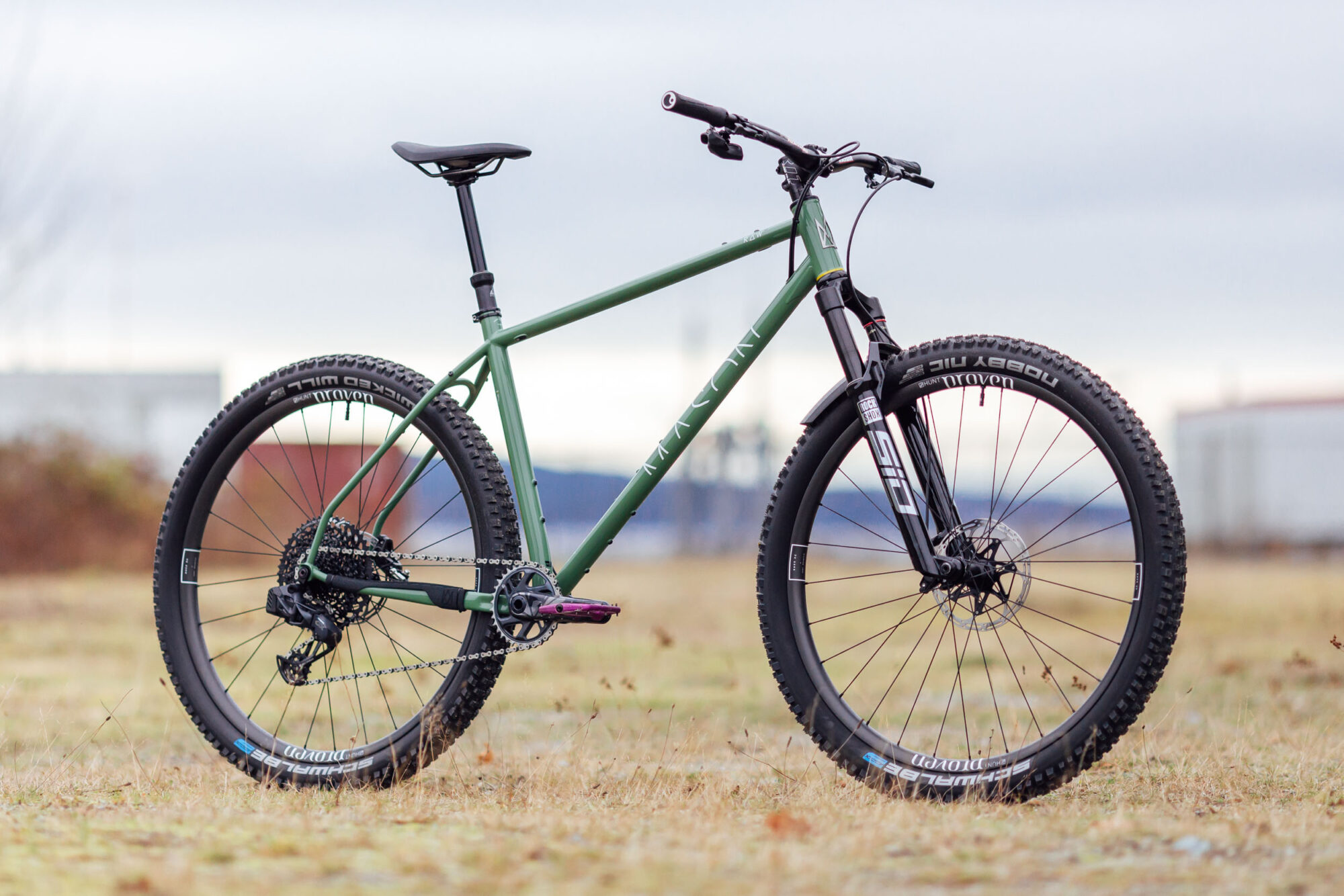
These days, there are dozens of steel hardtail sub-genres, including the latest cross-country bikes for going fast, super slack rowdy hardtails for bombing descents, semi-rad downcountry hardtails for a little bit of everything, and upright touring rigs plastered with mounts and bosses ready for a transcontinental expedition. With respect to Brendan Leonard, I find the latest wave of semi-rad hardtails to be pretty close to perfect as a do-almost-anything bikepacking bike. When climbing is just as important as descending, frame bag space is at a premium, and shred-packing and unloaded trail riding are seen as equals–the coveted steel hardtail shines bright.
Introducing the Mason RAW
The Mason RAW was first released in November 2021. It caught our attention not only as the UK-based brand’s first dedicated flat-bar mountain bike, but also as a bike with loads of bikepacking potential. According to Mason founder Dom Mason, the idea behind the RAW was to provide a capable mountain bike for those looking to venture further off road, travel comfortably with a load over long distances, and tackle steeper and more technical terrain. Although the RAW is quite a departure from the eight drop-bar bikes in their lineup, they made sure it didn’t drift too far from their #FastFar motto. The final design was based on feedback from ultra-endurance racers such as Josh Ibbett and Angus Young, and since its release, it has set a fastest-known time on the Highland Trail 550 in Scotland, landed a top spot at the 2022 Atlas Mountain Race, was in a first place pairs finish at the Silk Road Mountain Race, and more.
So, what makes the Mason RAW special? First up, each RAW frame is built and wet painted in the UK by the renowned fabricators at Five Land Bikes using a custom-shaped Dedacciai Zero/Zero Uno tubeset with a Reynolds 853 seat tube and head tube. Dedacciai manufactures all of their tubing in Italy using European-sourced steel, and they’re known for making some of the highest-quality tubesets available. According to Dedacciai, Zero tubing is designed for racing and high-performance frames while Zero Uno is engineered for commuter and long-distance users. Reynolds 853 is also a lightweight, thin walled, high-end tubing, meaning the RAW has incredibly nice bones.
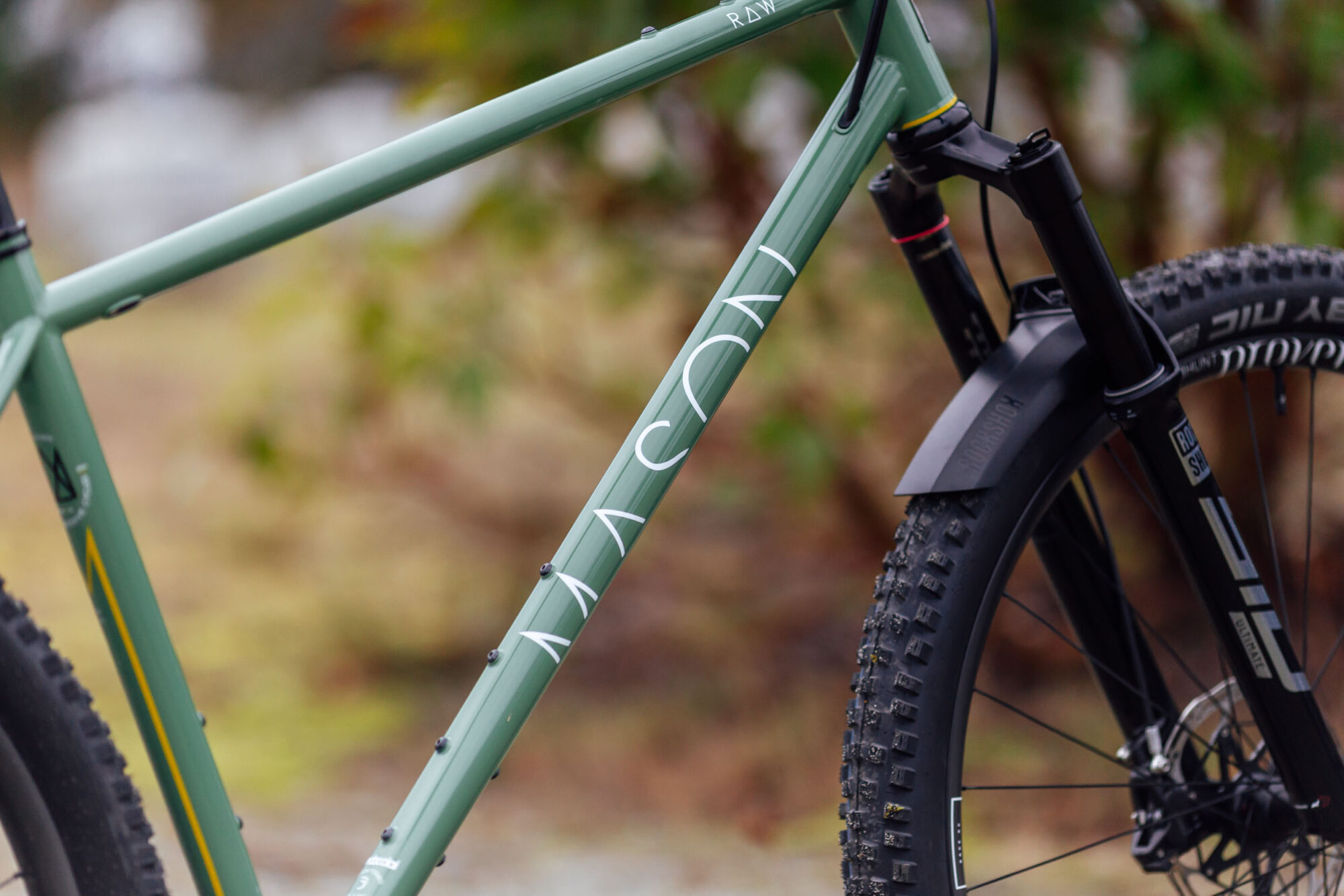
The RAW is designed around a 120mm suspension fork and has clearance for 29 x 2.6” tires, boost hub spacing, internally routed cables on the downtube and top tube, and a 73mm threaded bottom bracket. As far as mounts go, there are standard bottle mounts on the seat tube, three-pack mounts on the downtube and another set under the downtube, optional top tube mounts, hidden rack mounts in the rear dropouts, and the top tube is kept higher to leave plenty of room for a frame bag. Other smart details include a CNC-machined head tube, CNC-machined brake mounts and dropouts, internal dropper post routing, and a 3D-printed chainstay protector. As an added bonus, male threaded bottle bosses can be requested for an uninterrupted seat tube and as much seatpost insertion as possible–a helpful feature for smaller frames with long dropper posts. Even the cable routing can be customized upon request, which might be nice for folks who aren’t running their brakes moto-style like they do in the UK. It’s easy to miss, but there’s also a tiny chain pip on the inside of the drive-side seat stay that’s designed to hold your chain out of the way when removing or installing your rear wheel. Details matter, and Mason has an eye for them.
The RAW comes in four sizes and—because it’s handmade and customizable—is offered on a pre-order basis. You have the option to purchase it as a frame only, a frameset with headset and a RockShox SID Ultimate fork, or a complete build. As of today, Mason has three complete build options that range from £3,795 (~$4,825 USD) for the Shimano SLX build all the way up to £4,695 (~$5,975 USD) for the top-end SRAM GX AXS build. There’s no question that the Mason RAW is an expensive bike and at least £1,000 more than comparable Taiwan-made and painted frames, but having the RAW produced in small batches in Scotland isn’t cheap.
At the beginning of the year, Mason sent over their top-end GX AXS build, and throughout the last eight months, I’ve logged my fair share of rides. I’ve taken it out for everything from unloaded spicy enduro rides to technical root-infested trails here in the PNW, as well as fully loaded overnighters and a week-long route scouting mission on the recently published Sun Valley High Country Loop in Idaho. It’s one of my most ridden review bikes yet. The RAW is a high-caliber hardtail, and I felt it deserved a thorough test.
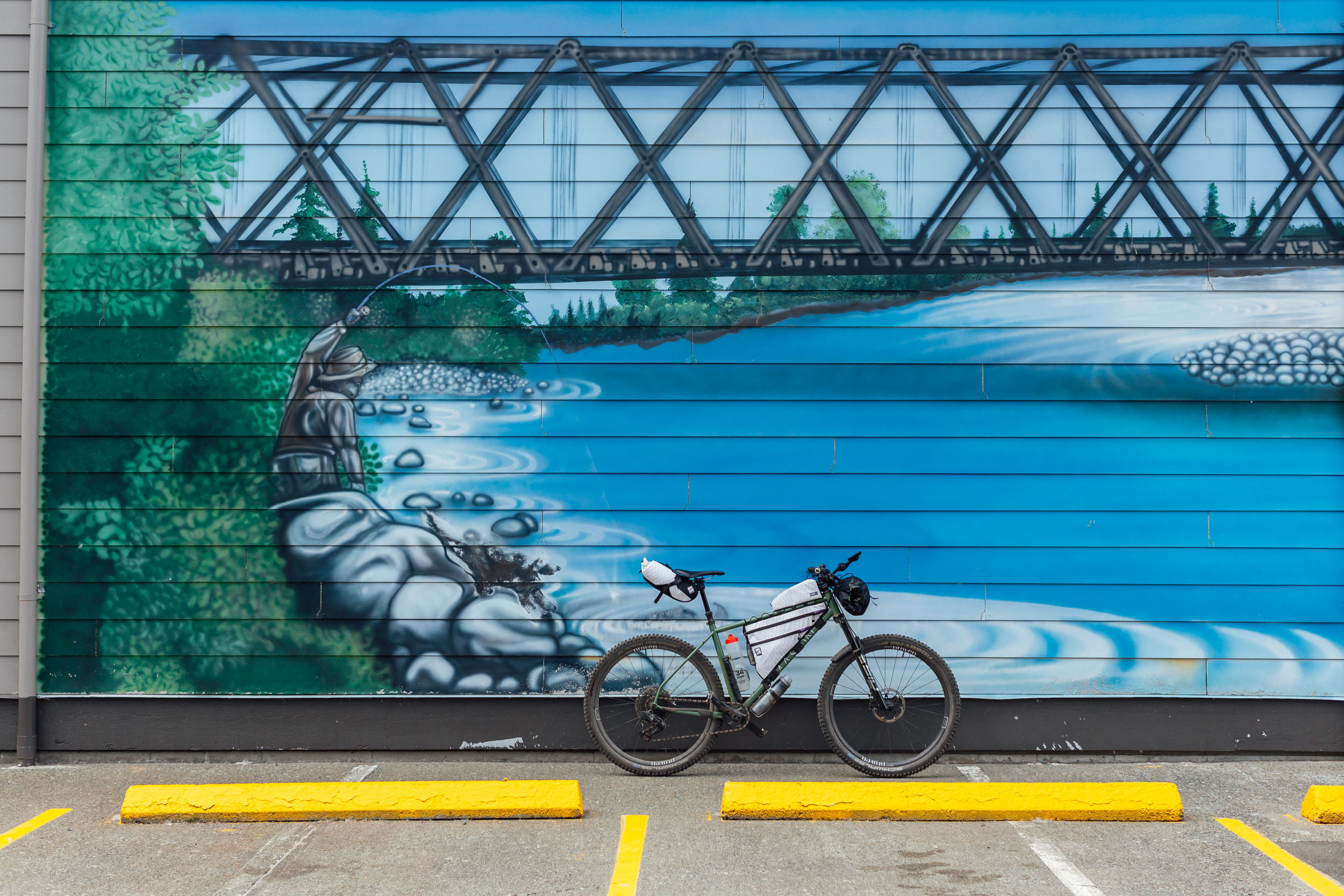
Dedacciai, Reynolds, and Steel
Logan mentioned this in his review of the Cotic SolarisMAX, but I’ll echo it again. A high-quality, thoughtfully constructed steel frame can have some of the best ride qualities and characteristics of any frame material when done right. Paired with the right geometry, you’ve got yourself a smooth-riding, responsive rig that springs to life when you jump on. The Mason RAW did this for me. I think Mason’s choice of tubing pays off when it comes to long rides. My beloved Why S7 (yes, I’ve still got it!) comes close, but the RAW offers a more comfortable perch on all-day rides, and it blows other hardtail mountain bikes I’ve tested out of the water. It’s no surprise considering the quality of tubing Mason is using. In short, high-quality tubes offer a higher tensile strength, which translates to thinner tubes and less overall weight. While there is a lot more going on, the specific characteristics of the tubes can be used to dial in the feel and functionality of the frame. Let’s take a closer look at how Mason approached this with the RAW.
As mentioned, there are several unique high-end tubes being used to form the RAW. Let’s start at the back end of the frame, since those seat stays seem to attract everyone’s gaze. Developed with Dedacciai specifically for their InSearchOf gravel bike, Mason liked the shape so much that they decided to use them for the RAW too. They taper from a 23mm oval at the Reynolds seat tube down to a 12mm cylinder at the dropouts, providing lateral stability at the seat tube junction and “core stability and great power transfer” when hammering out of the saddle, as Mason puts it.
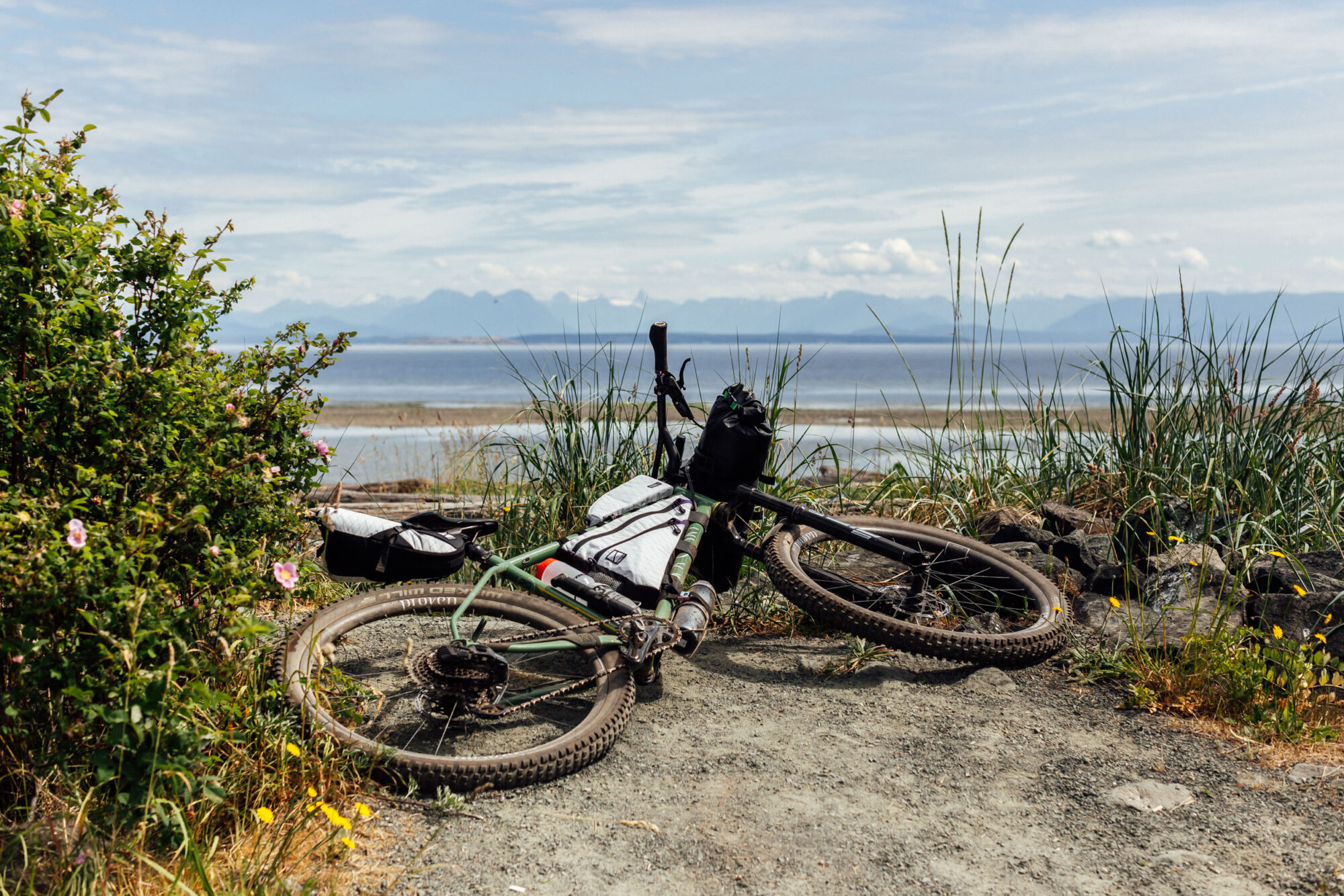
At the dropouts, the narrower tubing and final bend (which is slightly more pronounced on the larger frame sizes) provides compliance and comfort and leaves ample room for just about any type of rear brake caliper. I found the rear end of the bike to be very stable and not wiggly at all. Mason did a great job balancing stiffness and compliance, which is handy when navigating tricky sections of trail, powering up climbs, and riding all day long. The only time I felt the rear end was a touch too stiff was when I was hitting drops at low speeds, such as over big rocks or off awkward bridges.
The Dedacciai top tube starts out as a wide and stable oval where it meets the headtube and gradually tapers back to meet the 34.9mm seat tube. The Reynolds seat tube starts out straight from the manufacturer but the Five Land builders bend it toward the bottom bracket to provide tire clearance and its short-ish chainstays. The downtube is made from that long-ride-friendly Dedacciai Zero Uno tubing mentioned above. It has progressive butting and a custom D-shaped form where it meets the bottom bracket shell, similar to the top tube/head tube junction. This is designed to provide stability and reduce excessive overlap onto the seat tube. The chainstays are also made from premium Dedacciai Zero Uno tubing and are ovalized at the bottom bracket and tapered down toward the dropouts. They have a custom upward flare at the end to help eliminate chain slap and works with the seat stays to give Mason’s signature “boat-tail” silhouette.
All of these tapers, ovals, tubing selections, and details add up to a responsive, lightweight, and unmistakably compliant ride. At the risk of sounding overdramatic, the construction of the Mason RAW is among the best I’ve seen or ridden. When I asked framebuilder Matt Stitt about what the rider gets from using different grades of steel, he mentioned, “…all grades of steel have pretty much the same stiffness, so what frame designers are playing with are the tube diameters, wall thickness, cross-sectional profile, and material strength to get a frame that really suits its intended use. Big-diameter tubing is much stiffer and resists twisting or pedaling forces. Higher-quality steel can be drawn thinner while keeping the necessary strength and smaller diameter, and tapered or ovalised tubing (like that used on the rear end of the RAW) allows for a bit more flex.”
Hardtail Geometry (Now and Then)
A lot has changed since my days with the Krampus and Karate Monkey. Most notably, seat tubes have gotten steeper, head tubes have slowly gotten slacker, wheelbases have increased, and, in almost all cases, reach has lengthened and bottom brackets have dropped. Overall, the Mason RAW represents all that is great with present-day hardtails, whether you’re on the hunt for a versatile bikepacking rig or trying to push it further and harder on trails. Fancy tubes don’t mean much if the geometry isn’t dialed as well.
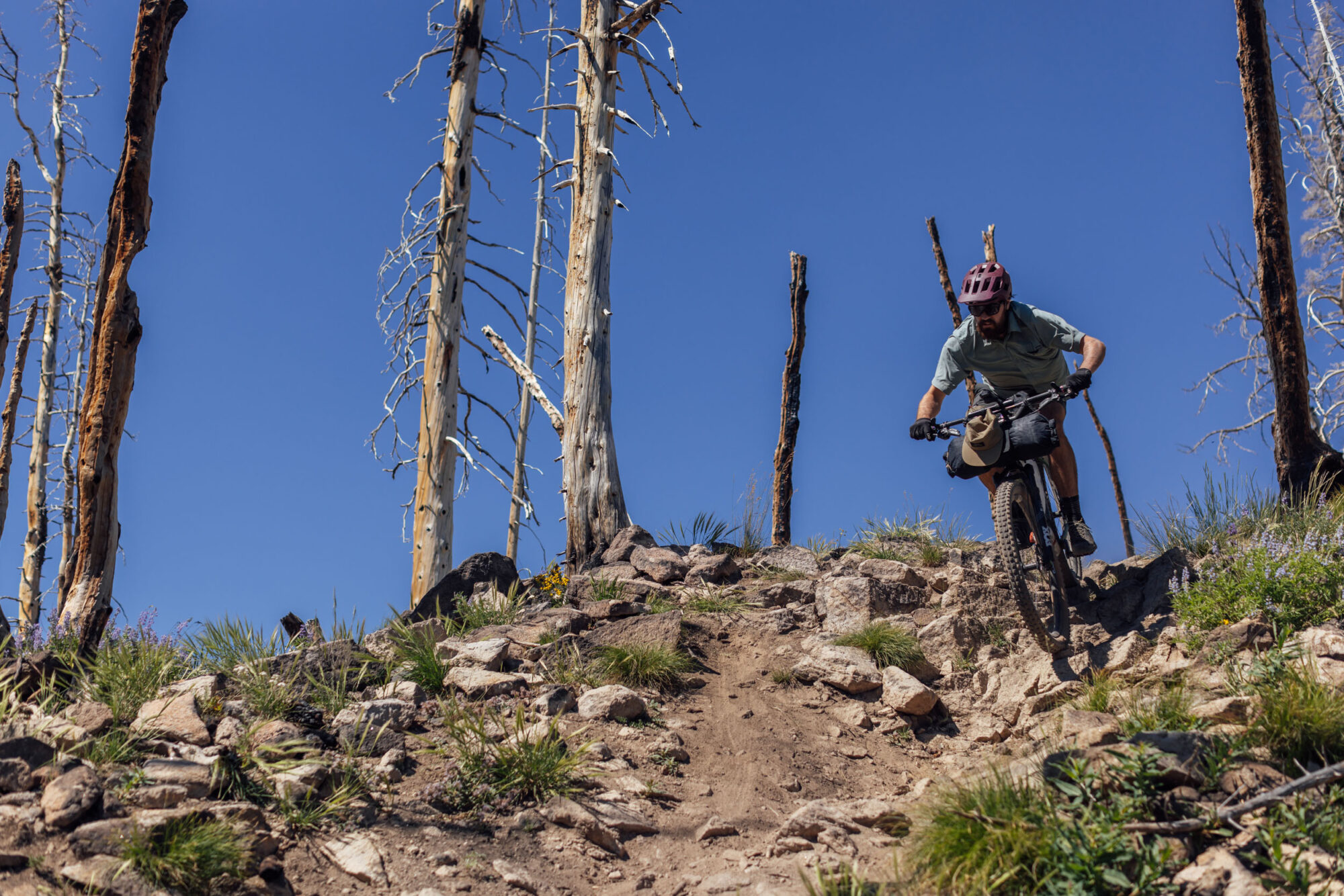
The RAW has a long reach and relatively high stack height that’s right on trend with progressive hardtails we’ve tested like the Esker Japhy, Panorama Taiga, and Nordest Britango. It has a 66° head tube angle across the entire size range, which I think is right around the sweet spot for trail riding and bikepacking. Its 435mm chainstays aren’t super short or long but sit right in the middle, and they add up for a decently long overall wheelbase. I’ve been sold on the long reach since reviewing the large Chromag Surface Voyager, so I actually ended up asking for the extra-large Mason RAW to mimic that fit. Compared to the Surface Voyager, the result was a touch longer reach, a higher top tube for more frame bag space, slightly less stack, a lower bottom bracket, and longer wheelbase.
| Size | S | M | L | XL |
|---|---|---|---|---|
| SEAT TUBE C-T | 395 | 430 | 470 | 505 |
| BB DROP | 60 | 60 | 60 | 60 |
| REAR CENTER | 435 | 435 | 435 | 435 |
| TOP TUBE EFFECTIVE | 577.7 | 606 | 628.4 | 654 |
| TOP TUBE ACTUAL | 565.5 | 588.4 | 606.6 | 630.4 |
| STACK | 610.3 | 619.4 | 628.5 | 637.7 |
| REACH | 426 | 451.2 | 471 | 494.3 |
| Standover (29 x 2.6) | 735 | 758 | 790 | 820 |
| TRAIL (29 X 2.6″) | 118.6 | 118.6 | 118.6 | 118.6 |
| FORK CROWN HEIGHT | 530 | 530 | 530 | 530 |
| FORK OFFSET | 45 | 45 | 45 | 45 |
| HEAD ANGLE | 66 | 66 | 66 | 66 |
| HEAD TUBE LENGTH | 100 | 110 | 120 | 130 |
| SEAT TUBE ANGLE (VIRTUAL) | 75.2/690 | 75.12/745 | 75.11/780 | 75.37/800 |
| WHEELBASE | 1151.2 | 1180.3 | 1204.3 | 1231.6 |
| FRONT CENTRE | 722 | 751.9 | 775.8 | 803 |
| AXLE SPACING | 148 | 148 | 148 | 148 |
| RIDER HEIGHT GUIDE cm | 162-170 | 168-180 | 178-188 | 186-198 |
In a lot of ways, the Mason RAW felt like a slimmed-down version of the Chromag and a few other hardtails that fall into this category. Thanks to the lighter tubing and progressive geometry, the RAW felt engaged on climbs and lively descents. On the way up, it felt stable and planted but was also agile enough to make sudden line tweaks on technical trails. It also wasn’t hesitant when I needed to lift the front end up and over rocks and roots or put some power down when a little extra oomph was called for. The generous 60mm bottom bracket drop also added to its planted and in control vibe. Pedal strikes weren’t an issue but also weren’t uncommon while navigating rock gardens or after poorly timed pedal strokes.
These qualities also shine when leaning into corners, riding berms, and bombing down trails. Even with the fast-rolling Nobby Nic/Wicked Will tire combo, driving the RAW into corners felt natural, and although it wasn’t quite as confident on steep, technical descents as I was on the Chromag Surface Voyager I tested, it never felt out of place. I’d say the RAW is in a tougher weight class than Mason originally intended and is partly why I made a few key component changes for my route-scouting trip to Idaho a few weeks back. More on that later.
It’s also worth noting that 29 x 2.6” seems to be the sweet spot these days for trail riding and bikepacking bikes. These tires roll over pretty much anything, maintain speed well on trails, and don’t feel too sluggish on roads and gravel with the right choice of tread patterns. The 29 x 2.6” Wicked Will tire in the back end was true to size and left just over a quarter of an inch of clearance at the chainstays and nearly three quarters at the seat stays, which is great in my eyes. Clearance was pretty tight up front with the SID Ultimate fork and integrated mud guard installed, but it was a non-issue once I swapped over to the larger fork.
Mason Raw GX AXS Build + Making it My Own
Priced at £4,695 (~$5,975 USD), the GX AXS build is currently Mason’s highest-end RAW build option. It comes kitted out with a selection of fancy bits that add up to a lightweight, performance-driven build. The RAW I was sent came set up with the new carbon Hunt Proven wheels from their sister brand, a 120mm travel RockShox SID Ultimate fork, SRAM G2 hydraulic brakes, a PNW Loam dropper post, and, of course, a SRAM GX AXS 12-speed drivetrain.
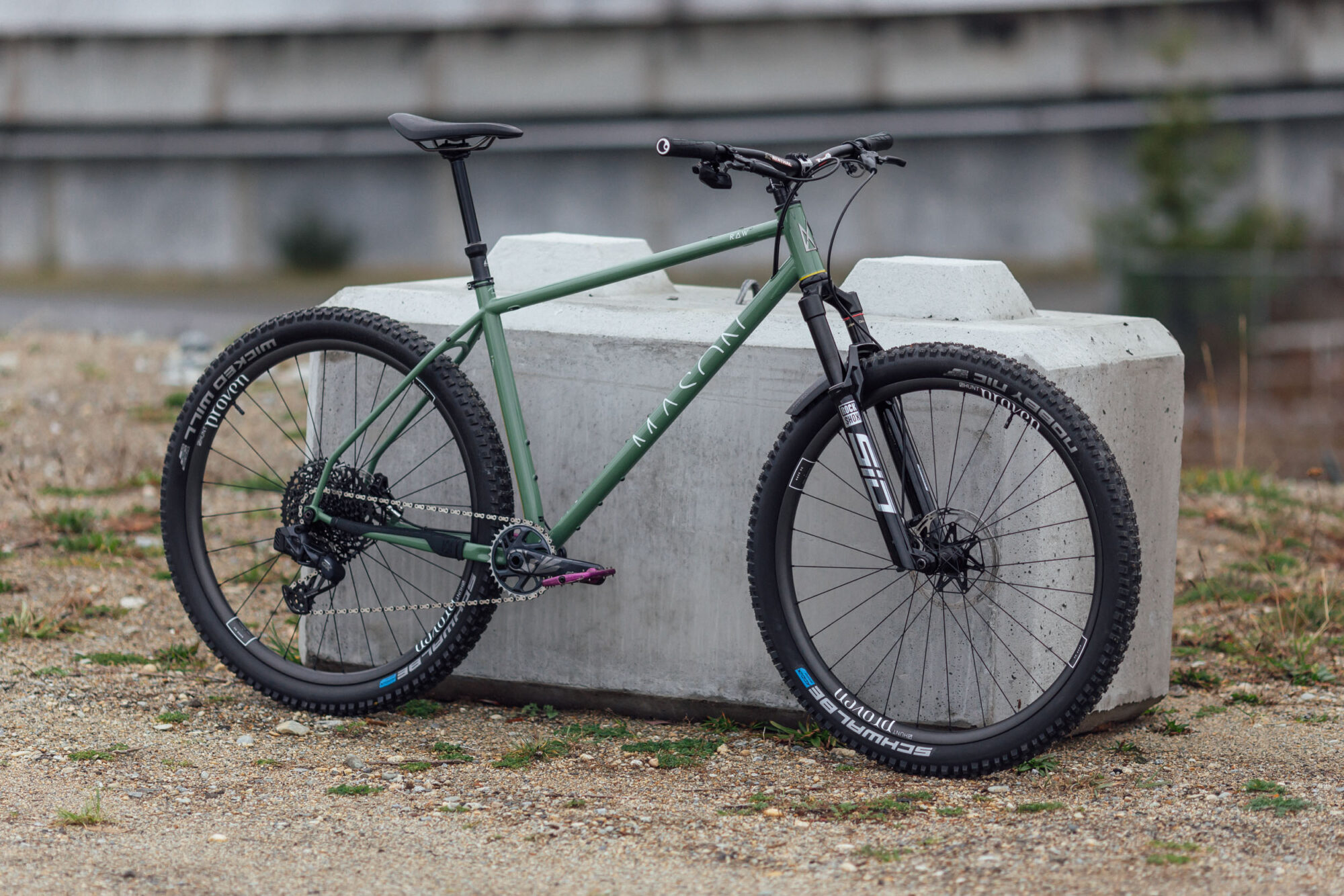
I had no issues with any part of the build during my testing period and see why Mason chose the parts they did. It’s a thoughtful selection of components that makes sense for lightweight long-distance bikepacking and trail riding. With that said, I felt like the RAW had more to offer than the build kit led me to believe, and I was right. I found the Hunt Proven wheels a touch too lightweight and stiff to head into the backcountry, and I was craving a slightly beefier/longer travel fork. In fact, Mason even suggested that the Proven XC wheels might not be the best option for bikepacking on super rough terrain given that they’re a lightweight cross-country racing wheel at heart. As soon as the spokes started making pinging noises early on in my testing period, I was eager to swap them out for something else. With help from TAWS Bike Garage in Powell River, I swapped out the wheels, fork, and a few other bits to wring every last bit of trail bike out of the RAW.
GX AXS Build Kit
- FRAME: Dedacciai/Reynolds Steel
- FORK: RockShox SID Ultimate 120mm
- CRANKSET: SRAM GX
- SHIFTER: SRAM GX AXS Eagle
- CASSETTE: SRAM GX Eagle, 10-52T
- DERAILLEUR: SRAM GX AXS Eagle 12-Speed
- CHAIN: SRAM GX Eagle 12-Speed
- BOTTOM BRACKET: SRAM DUB BSA, 73mm Threaded
- RIMS: Hunt Proven Carbon Race
- FRONT HUB: Hunt 110x15mm
- REAR HUB: Hunt 148x12mm
- TIRES: Schwalbe Nobby Nic/Wicked Will 29 x 2.6″
- BRAKES: SRAM G2 RSC
- ROTORS: SRAM Centerline 180mm
- HANDLEBAR: Renthal Fatbar 800mm
- STEM: Ritchey Trail
- SEATPOST: PNW Loam 31.6 dropper post
- SADDLE: Fizik Terra Argo X3
- HEADSET: Deda EC/ZS44mm sealed bearing headset
I don’t normally go through the trouble of swapping components around on review bikes, but I was enjoying my time with the RAW and had a hunch a few changes would only improve its trail-riding prowess. The first few changes included swapping the standard flat bar for my Mone Light Bar carbon riser bar, adding Ergon GA3 grips, and swapping the dropper post for a slightly longer-travel option to help work around the high top tube. With my touch points dialed, I also made the change to a set of Revel RW30 wheels, a knobbier Teravail Kessel tire up front, and a Fox 34 Performance Elite 130mm travel fork.
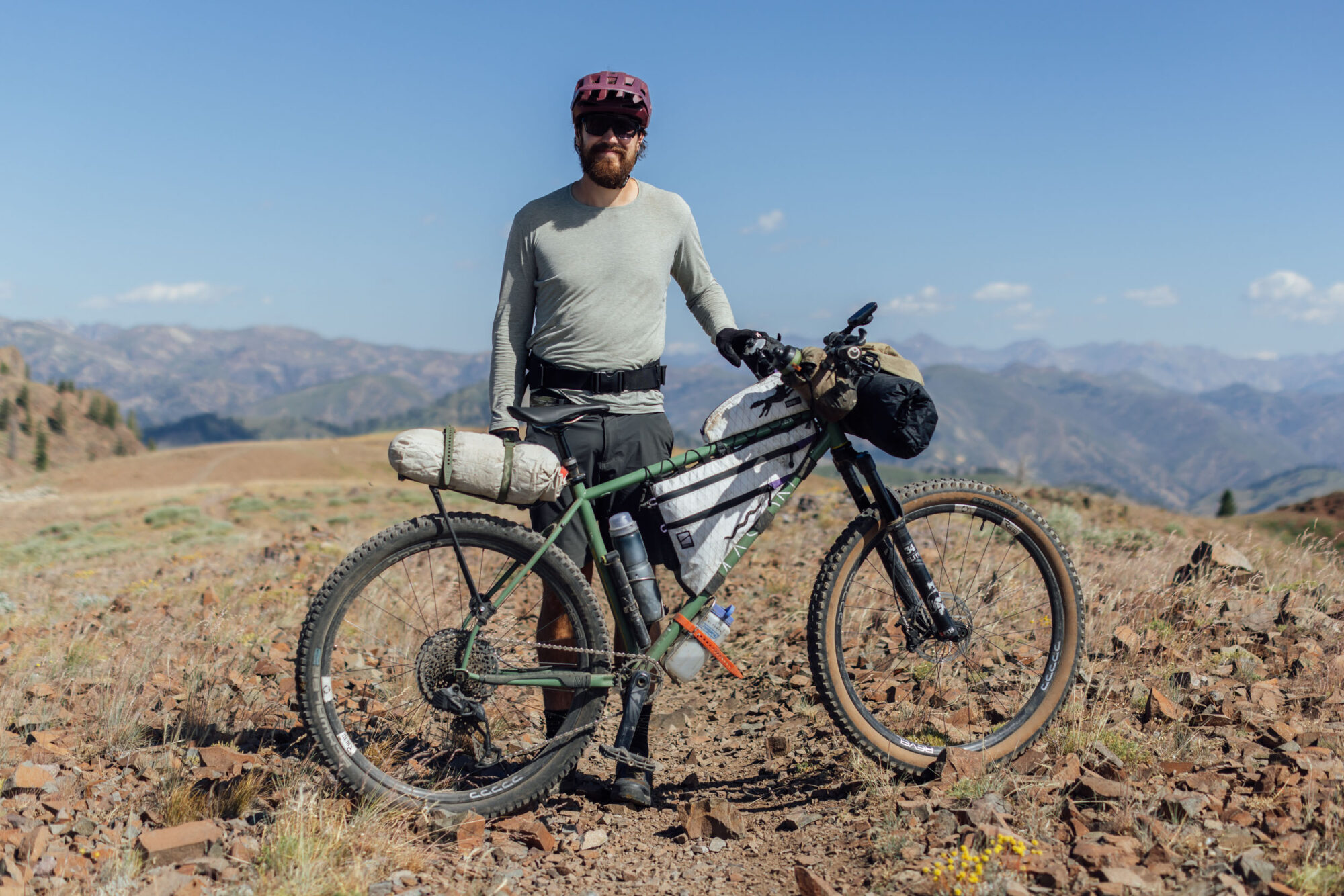
When I asked Mason about switching to a longer-travel fork, they said it wouldn’t be a problem, but they don’t recommend it outright as they didn’t want folks thinking the RAW is something it’s not. For multi-day backcountry singletrack missions where racing isn’t the goal, I think switching to a more comfortable 130mm travel fork suits the RAW just fine. Don’t get me wrong, the SID Ultimate is a fantastic fork (read Logan’s recent review here), but I just wanted something a little bigger for my Idaho trip. With the new fork, I felt confident charging harder into chunky descents and also found my hands, wrists, and upper body less fatigued day after day. The weight increase was noticeable but worthwhile in my eyes.
In the end I was super happy with the changes I made. I feel like the wheel and fork swap got the RAW as close to the perfect steel bikepacking hardtail as I’ve seen, but I also see the value in a lightweight race-focused build for riders chasing records or KOMs/QOMs. For the record, the stock GX AXS build weighed in at around 28 pounds (12.7 kilograms), my Idaho-special build weighs just under 30 pounds (13.6 kilograms), and the extra-large frame itself weighs 5.8 pounds (2.7 kilograms).
Bikepacking on the Mason Raw
With the RAW outfitted with a slightly longer fork, riser bars, ergonomic grips, and fresh wheels, I felt entirely comfortable riding out into the mountains. I beelined it to Idaho to scout a new route with Tom Lilly and some friends. For this trip, I had the RAW set up with a prototype minimalist rear rack to make use of the entire dropper post travel, a custom wedge frame bag and top tube bag from Straight Cut Design in Scotland, and the new Miss Grape ILCOSO handlebar cradle. I used two feed bags, a King Cage Manything cage under the downtube, and the new Reform Tantalus heat-moldable saddle, which I tossed on right before the trip. My steel slipper.
Everything that was good about the RAW unloaded carried over while riding loaded up for bikepacking. With the help of a 130mm travel fork and different wheels, the extra weight of bikepacking gear didn’t hinder that high-end steel ride feel, and it proved to be quite comfortable during the five days we were out there. There was still a clear sense of playfulness and performance on the climbs and descents, and it pedaled efficiently and confidently through a wide range of conditions and trail types. Despite having a slower-rolling front tire, the RAW never felt sluggish, even on roads and gravel, which had me thinking about just how versatile steel hardtails are. As long as I kept weight over the front of the bike, I had no problem following lines on steep climbs, maintaining traction, and moving swiftly.
The RAW’s 66-degree head tube angle, 120mm stock fork, and long front center aren’t as aggressive as slack hardtails like the Norco Torrent, Marin El Roy, or Kona Honzo. This means the RAW isn’t going to be the shreddy hardtail of your dreams or replace a proper trail/enduro bike, but I’m willing to bet it handles the weight of bikepacking gear and bags more naturally. The front end stays engaged and the wheel doesn’t flop around with the extra weight of a handlebar bag on it. It hits a geometry sweet spot that feels competent and unruffled when pointed down intimidating trails without being totally overkill for what it was intended to be–something that Mason calls a “TrailTravel” hardtail. That’s super cheesy but accurate.
The frame’s high-end construction makes for a very pleasant ride, both loaded and unloaded. The added bonus of generous frame bag space, lots of mounts, and custom frame options make the RAW pretty appealing for a multi-use bike. There’s not much to complain about. I suppose sliding rear dropouts would add another layer of customization and easier single speed setup if that’s your thing, but that’s not a deal breaker for me.
Just a Hardtail
Is the Mason RAW worth the added cost of European/UK materials and fabrication? It’s a question I’ve been struggling with for several months now. I imagine our UK-based readers would have an easier time swallowing the price if supporting a local brand and framebuilders—and getting a high-end product—is a top priority. For anyone overseas, things get a little more complicated. Once you start adding on shipping costs and duties, the difference in price starts to get overwhelming for what is inevitably just a hardtail. For the price of the Mason RAW frame, you could start looking at fully custom frames with geometry that’s specific to you. For example, UK-based Starling Cycles offers custom sizing on their frames for an additional £450, which ends up being about the same price as the RAW. However, it’s also one of the nicest small-batch production steel hardtails money can buy, providing a custom-like experience from a small brand that clearly has a knack for producing unique, high-performance bicycles.
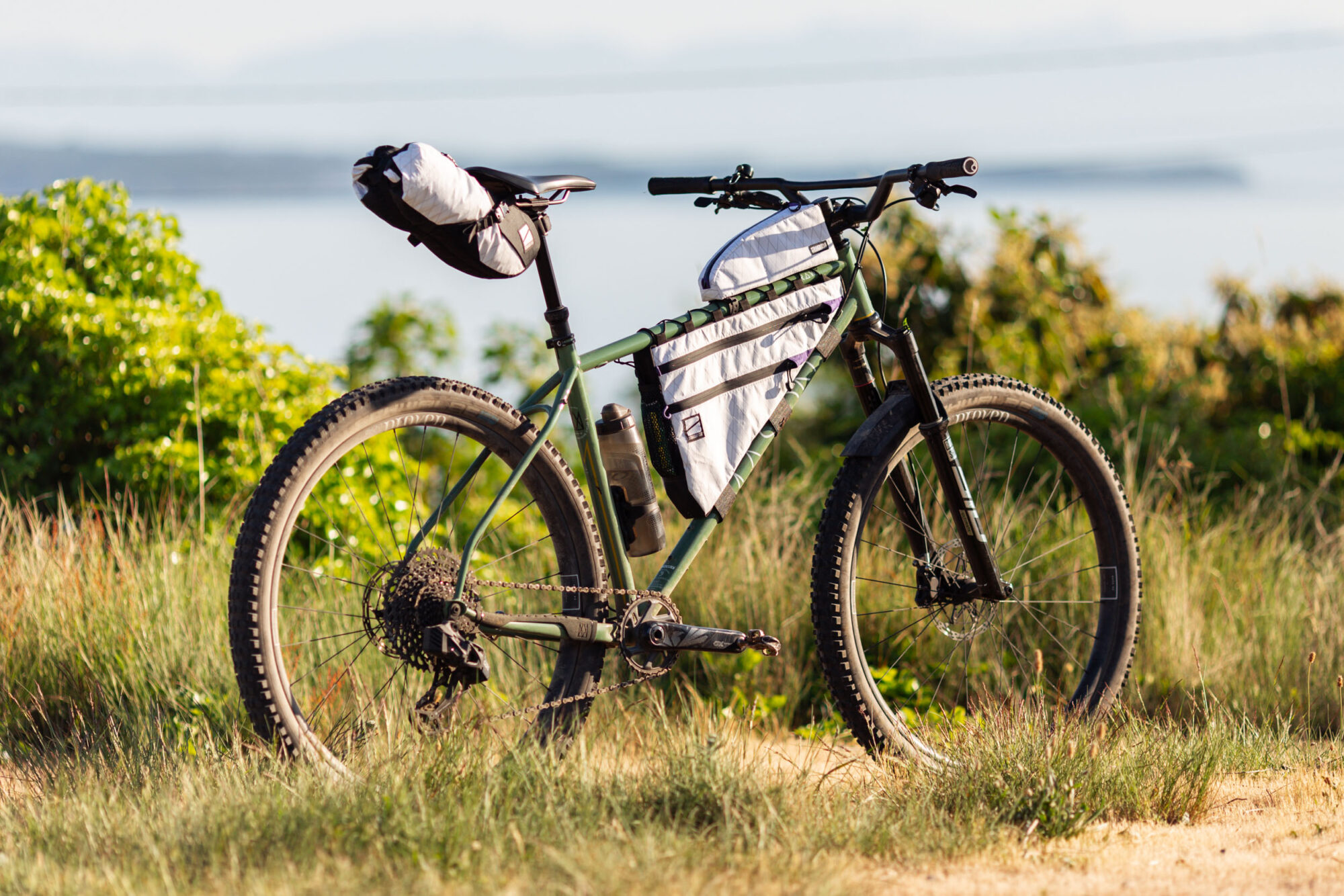
It’s challenging to justify the price without riding it first, but you’ll just have to take my word for it. The Mason RAW is smooth and lively, rides in a heavier weight class than Mason originally intended, and might just be the closest thing I’ve experienced to the infamous forever bike we’re all searching for. Most importantly, it’ll provide an ear-to-ear grin that only a steel hardtail can deliver. So yeah, it’s just a hardtail, but it’s a mighty fine one.
- Model/Size Tested: Mason RAW, XL
- Actual Weight: 28.2 pounds (12.8 kilograms)
- Place of Manufacture: United Kingdom
- Price: £4,695 (~$5,975 USD)
- Manufacturer’s Details: MasonCycles.cc
Pros
- European/UK materials and fabrication using high-end Dedacciai and Reynolds tubing
- Dialed geometry for trail riding, bikepacking, and multi-day epics
- Smooth and efficient ride quality makes climbing, descending, and cornering a joy
- High-end details, rack mounts, downtube mounts, and top tube mounts
- Lots of frame bag space thanks to higher standover height
- Lightweight frame and build kits are well-specced for long rides
Cons
- Expensive, but justifiably so given local manufacturing, cost of materials, and overall quality
- No sliding rear dropouts
- Near-vertical seat stays might make it a little harsher than some other frames
- No proper rear rack bosses at rear dropouts, although hidden removable ones work
- Wouldn’t choose Hunt Proven carbon XC wheels for bikepacking
Wrap Up
Steel is real, but not all steel is equal. The Mason RAW represents the best of a small group of production hardtails made from top-shelf steel tubing that’s normally reserved for fully custom bikes. So, why pick the RAW over a custom bike? Beyond shorter wait times, the RAW is pretty much as dialed as a production hardtail gets, from its trail and bikepacking-friendly geometry to proper 2.6” tire clearance and loads of little details like the 3D-printed chainstay protector and room for a big frame bag. Not to mention the semi-custom nature of small batch production gives folks plenty of option, like the ability to substitute male-threaded bosses for longer dropper posts or top tube bosses. Of course, keeping all design and fabrication in Europe/UK makes for an expensive bike.
The Mason RAW moves efficiently and swiftly through varied terrain, including technical singletrack, rough doubletrack, and anywhere else you might end up. It is well-equipped to handle the weight of bikepacking gear and makes a fantastic daily driver mountain bike as well. Other than tearing down white-knuckle downhill runs, it’s hard to imagine anywhere the Mason RAW would feel out of its element.
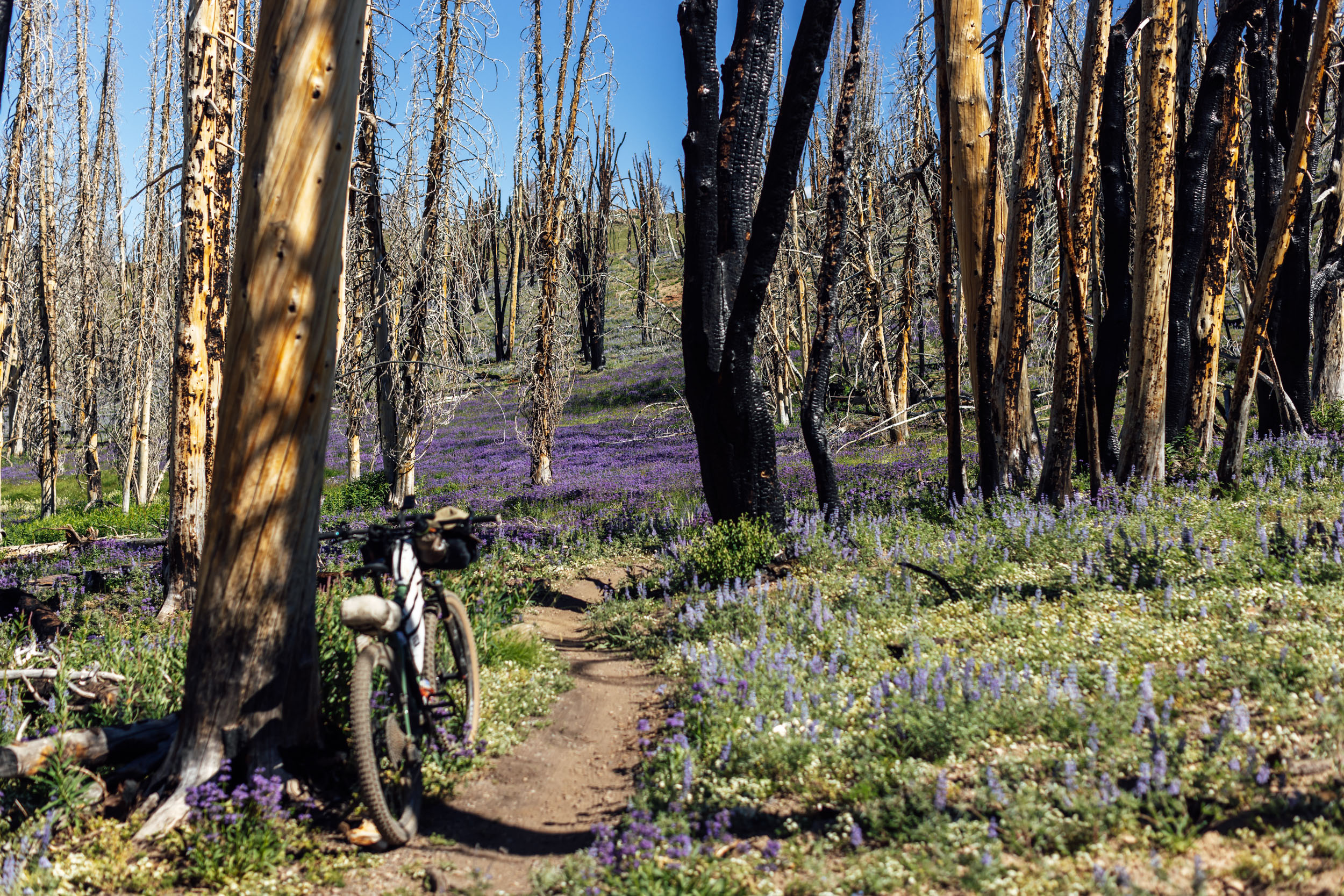
Further Reading
Make sure to dig into these related articles for more info...
Please keep the conversation civil, constructive, and inclusive, or your comment will be removed.













